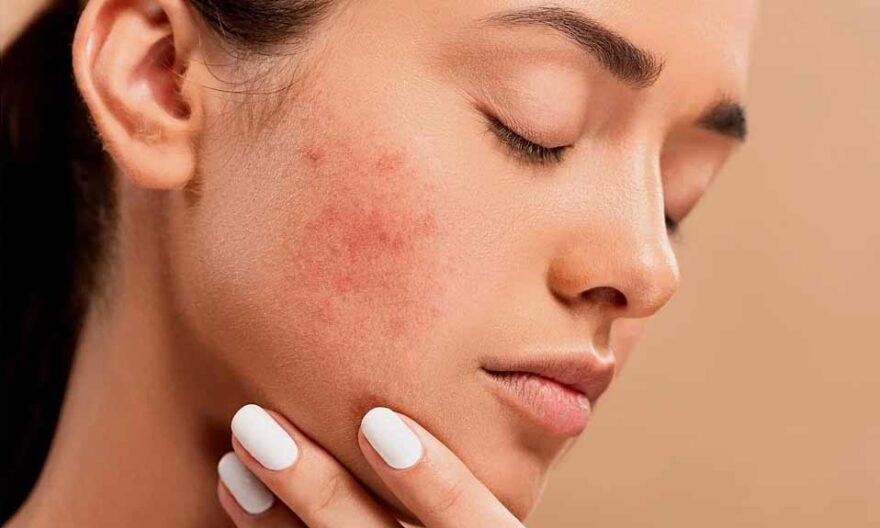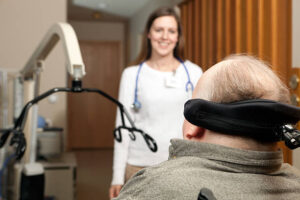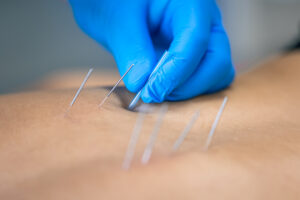
Acne is one of the common skin conditions, affecting millions of people around the world, and the condition usually resolves on its own with time; however, it may leave undesired reminders known as acne scars. These scars can range from small hollows to raised irregular patches of skin and result in damage that goes much further than the hurt caused to a person’s self-esteem and confidence.
The good news is that you don’t have to live with acne scars forever. Effective acne scar treatment can make them less noticeable and help you achieve smoother, clearer skin. This post takes you through a journey in the minefield of acne scar treatment, outlining the many different types of scarring, what factors influence them, and which proven techniques can be used to regenerate your skin.

Types of Acne Scars
There are two main categories: atrophic scars and hypertrophic scars.
Atrophic scars: This is a common type in which atrophy occurs from the loss of underlying tissues, hence creating depressions on the skin. There are three subtypes of atrophic scars:
- Ice pick scars: These are narrow, deep scars that resemble the tip of an ice pick.
- Rolling scars: These have a rolling appearance, making the skin look uneven.
- Box scars: These are wider, sharp-edged scars with defined borders.
Hypertrophic scars and keloids: They result from producing extra collagen at the place where it was affected during the healing process; therefore, they raise reddish scars that can even extend over the perimeter of the pimple first affected. Keloids are a more severe form of hypertrophic scars and can continue to grow even after the acne has healed.
Factors Affecting Acne Scar Formation
While acne itself represents an independent risk factor for scarring, there are also several concomitant factors to be considered with the severity of scars. Here are some of the contributing factors to the condition:
Severity and duration of the acne: The more prolonged the period and intensity, the higher this factor may present a risk of scarring for the individual.
Picking and popping pimples: As much as it feels so tempting, don’t pick at the pimple. This can further inflame, and you may damage the skin tissue underneath, thus leading to even more chances of scarring.
Sun exposure: The sun is likely to darken all the scar tissues, and correspondingly, the healed injury will be more visible. Always use a sunscreen that is of at least SPF 30 or higher every day, be it even on a cloudy day.
Skin type: People with oily skin tend to be more prone to acne and, consequently, acne scars.
Proven Strategies for Effective Acne Scar Therapy
Topical Treatments
You may try out the following topical treatments for mild acne scars that you may apply directly to the skin since both have been found to play an essential role in the improvement of scars:
Retinoids: These are derived from vitamin A and can encourage the production of collagen and cell turnover, which could enhance the appearance of relatively shallow scars. It is available at different strengths, so it is essential to consider the type of skin and sensitivity by visiting a dermatologist before the use of any of the products.
Alpha hydroxy acids (AHAs) and beta hydroxy acids (BHAs): These exfoliating acids work by basically facilitating and ridding the skin of dead cells, hence in return promoting better skin texture. Generally, AHAs such as glycolic acid, on the other hand, target the topmost skin layers, while salicylic acid penetrates deeper into the unclogging of pores and reduction of inflammation.
Minimally Invasive Procedures
The range of cosmetic surgical procedures—dermatologists can give leading-edge, significantly improved procedures for minimally invasive procedures designed to greatly reduce the appearance of more prominent scars.
Microdermabrasion: Tiny crystals or a diamond-tipped wand gently abrade the skin surface to stimulate the production of collagen and smooth over minor scars. It is quick and usually well-tolerated, but most people require multiple sessions for it to become effective.
Chemical peels: Another type is chemical peels, in which controlled peeling is done by applying a solution on the surface of the skin to take off that skin layer. After the healing period is over, a smoother, fresher layer of skin will be revealed. The strength of the peel can be tailored, but again, deeper peels offer more dramatic results at the cost of extra downtime for the skin.
Microneedling: A new procedure where a roller that has fine needles in it is rolled over the skin to create very tiny holes in the skin. These small wounds will trigger the healing response of your body that entails enhanced collagen generation and could result in the improvement of scarring. Microneedling can be the most effective for all scar types and has little downtime.
Injectable Fillers
For deeper, more indented scars, an effective, game-changing treatment that can be done is using injectable fillers. Most are derived from hyaluronic acid or collagen and are injected under the skin directly into the scar itself to raise it and create a more even surface. The fillers are greatly appreciated because most patients would rather have temporary results. They give very good results in the treatment of rolling or box scars, albeit temporary, and may require a touch-up every 6-18 months.
Laser Treatments
Laser treatments are another effective acne scar treatment. There are two main types:
Ablative lasers: These strip off the outer layers of skin most precisely and allow new collagen formation for a great improvement in the scar. Ablative lasers give dramatic results but have more downtime and can result in redness and swelling.
Non-ablative lasers: The type of laser that sends heat energy into the skin without harming the surface layer. They stimulate the production of collagen and enhance the texture of scars much more slowly than ablative lasers but may take several sittings of the treatment and maybe it is less effective for deeper scars.
Choosing the Right Treatment for You
The number of options one has to choose from can be daunting. Here is where a dermatologist comes in with a very critical role:
- Evaluation and recommendations from the dermatologist: The type of scar you have and its severity will be evaluated for the best mode of treatment by the dermatologist.
- One size doesn’t fit all: Your dermatologist will sit down with you to work out a treatment plan tailor-made for your specific needs and type of scar.
- Realistic expectations: Some treatments offer more improvement than others. A dermatologist can explain what to expect from the treatment and possible risks of side effects.
Remember, the best effective acne scar treatment usually needs a series. Your dermatologist will plan a series that fits your individual desires concerning the treatment of your exact problems.




